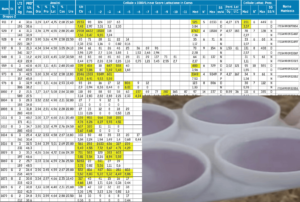WAYS TO REDUCE SOMATIC CELL COUNT IN COWS WITHOUT ANTIBIOTICS

TIME IS RUNNING OUT: HOW TO QUICKLY REDUCE SOMATIC CELL COUNT AND SAVE YOUR CONTRACT WITH THE DAIRY PROCESSING PLANT
Have you ever felt like the ground is slipping from under your feet? Imagine receiving a call from the dairy plant saying, “If the somatic cell count does not decrease, we won’t be able to accept your milk.” This is not just stress—it’s a real catastrophe. Every day with high somatic cell levels means not only penalties but also a serious risk of contract termination, and consequently, loss of income.
But don’t panic. Let’s analyze why somatic cell levels increase, how to reduce them quickly, and which solutions work without antibiotics or unnecessary milk losses.
WHY DOES THE SOMATIC CELL COUNT INCREASE?
Somatic cells are part of a cow’s immune system, activated in response to inflammation. If their levels are excessively high, something has gone wrong in the milking, feeding, or animal management process. Several key factors contribute to an increase in somatic cell count in milk.
Firstly, poor udder hygiene—if pre-milking cleaning is insufficient or post-milking treatment is improperly performed, the risk of infections rises. Secondly, mastitis, even in subclinical forms, may go unnoticed but significantly increases somatic cell levels. Thirdly, stress in cows, caused by heat, drafts, or inadequate housing conditions, plays an important role. Lastly, feeding errors, where an unbalanced diet weakens the immune system, increase the risk of inflammatory processes.
Now that we’ve identified the causes, let’s move on to what to do if somatic cell levels are already critical.
EMERGENCY ACTION PLAN: HOW TO QUICKLY REDUCE SOMATIC CELL COUNT
The first and most crucial step is strict hygiene control. Before milking, high-quality pre-milking disinfectants must be used to minimize the risk of bacteria entering the milk. After milking, it is essential to treat the teats with effective protective solutions to prevent inflammation. Additionally, regular checks of the cleanliness of milking equipment and milk collection tanks are necessary, as contamination can lead to infection spread.
Using antibiotics to lower somatic cell count is not always the best solution, as it can lead to milk quarantine and financial losses. That’s why modern farms choose natural methods.
Salvalat, used for udder washing in dairy cows, helps reduce somatic cell count without disrupting the milk cycle. Early application of Salvalat prevents mastitis from becoming chronic by acting on biofilm and eliminating most pathogenic microorganisms. This product is particularly useful in cases where antibiotics or allopathic veterinary drugs have failed to address the animals’ health issues. Tested and compliant with European safety and quality standards.
Papilla Seal provides effective protection by creating a physical barrier in the teat canal, preventing bacterial entry and reducing inflammation. This innovative sealant is designed for dairy cows during the dry period and contains natural ingredients such as beeswax and cucumber extract, ensuring safe and effective protection. Before application, it is crucial to clean and disinfect the teats immediately after the last milking before the dry period. The contents of one Papilla Seal syringe should be introduced into each quarter of the udder using a special applicator. After application, massaging the udder is not recommended to ensure that the product remains inside the teat canal and performs its protective function. The use of Papilla Seal helps prevent new infections during the dry period, ensuring udder health and improving milk quality in the next lactation cycle. Tested and compliant with European safety and quality standards.
Salus DIP is a hygienic teat treatment solution that forms a reliable antibacterial barrier and helps maintain udder health. Its use helps reduce the risk of mastitis and other infections, providing long-lasting protection between milkings. Salus DIP contains components with antiseptic and moisturizing properties that keep the teat skin in good condition, preventing cracks and irritations. Regular use of this solution after each milking contributes to improved overall udder health and enhances milk quality. Tested and compliant with European safety and quality standards. Compatible with both manual and automated application systems.
Another essential step is timely diagnosis and isolation of infected animals. Regular mastitis tests help detect hidden infection hotspots that can significantly increase somatic cell count. Cows with critical levels should be separated to prevent the spread of the problem within the herd and to protect milk quality.
Lastly, but equally important, is optimizing feeding and housing conditions. To strengthen their immune system, cows need a well-balanced diet enriched with vitamin complexes. Access to clean water and a comfortable environment reduces animal stress, improving somatic cell parameters and the overall health of the herd.
CONCLUSION: ACT FAST!
If somatic cell levels are rising, waiting is not an option—every day of delay can cost a farmer thousands of euros. However, the problem is solvable with the right approach. Strict hygiene control, natural antibiotic-free solutions, and careful management of feeding and housing conditions can return somatic cell levels to normal within just a few days.